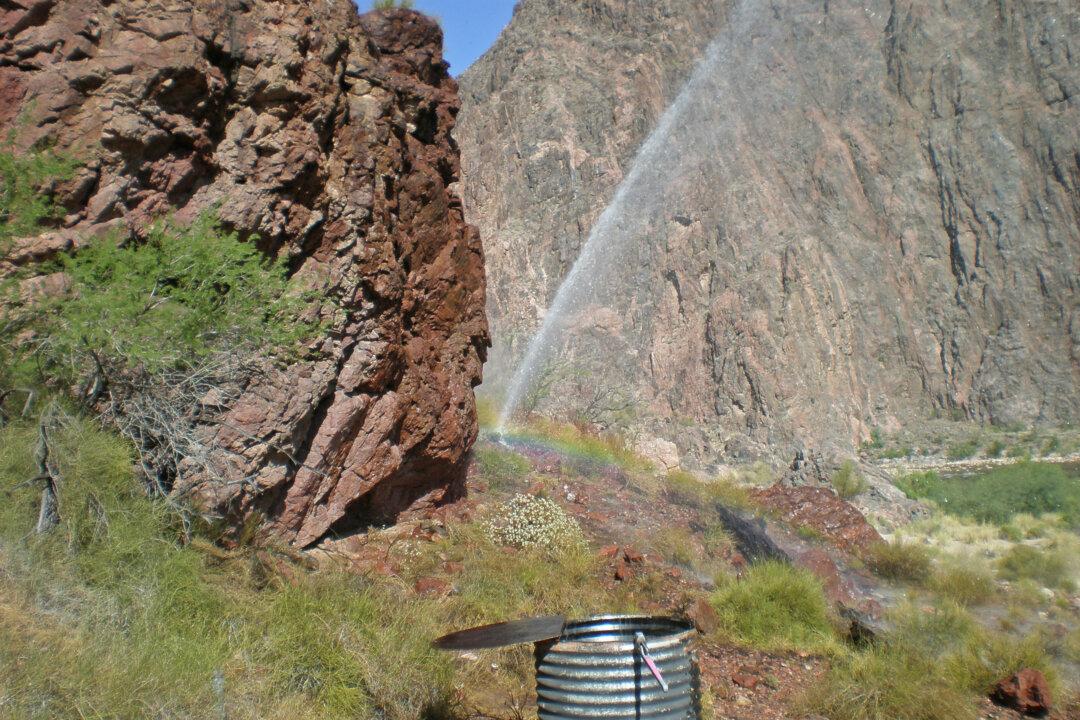NEW YORK—With just under seven months remaining in his third and final term, Mayor Michael Bloomberg released his much anticipated post-Sandy plan on June 11. “A Stronger and More Resilient New York,” is aimed at protecting New York City from the effects of climate change long after Mayor Bloomberg leaves office.
The comprehensive 430-page plan lists 250 recommendations encompassing coastal defense, building repair and construction, ways to manage rising insurance costs, and how to shore up the city’s infrastructure.
The city estimates the plan will cost $19.5 billion if completed on time, a cost that dwarfs the $12 billion the Army Corps of engineers spent thus far to improve New Orleans’ flood-walls, gates, and levees since Hurricane Katrina in 2005.
Many of the recommendations will take years to implement, some over a decade. This leaves the responsibility of executing the resiliency plan squarely on the shoulders of the next mayor of New York.
“We’ve got a plan. We know what needs to happen, and we know we can’t wait,” Bloomberg said from Brooklyn Navy Yards where the plan was introduced. “It is up to you to hold us accountable for making as much progress as possible over the next 203 days, and it is up to you to hold our successor accountable for getting it done.”
Several mayoral candidates praised the mayor for thinking big, including Democrat Sal Albanese and Republican George McDonald, who said they were inclined to pursue its major initiatives.
Democrat Bill de Blasio, the city’s elected public advocate, praised the all-encompassing approach but said officials need to ensure the plan does enough to help the poor and doesn’t rely too much on uncertain federal support.
Republican John Catsimatidis, who has questioned whether the effects of climate change are overstated, wondered in a statement whether the city could spend considerably less and still get adequate protection.
“The $19.5 billion price tag is a huge amount of money,” said the billionaire candidate, whose businesses include oil, real estate and grocery stores.
Firsthand Knowledge
Former head of the MTA Joseph Lhota, who is running as a Republican, saw firsthand the impact of Hurricane Sandy. He joined the race in January with the media still glowing over his ability to get the subway system back up so quickly.
He said Bloomberg deserves enormous credit for putting together such a comprehensive plan.
“He has done the next mayor—me—a great favor by putting this plan out there,” Lhota said by phone June 12. “As the next mayor, I will implement as much of this as I physically can and make sure the people of New York City are protected.”
Lhota said his work at the MTA, as well as serving as deputy mayor in the Giuliani administration showed him how important planning was in disaster-preparedness, something he feels gives him a leg up on the competition.
“Very few people running for mayor have run large, complex organizations that have prepared them for disasters,” Lhota said.
Speaker Christine Quinn, who is running on the Democratic ticket, was also supportive of the mayor’s vision.
Quinn has perhaps the most inside knowledge of how the city has recovered thus far. Two weeks after Sandy she called for an immediate plan to ensure the city was ready to deal with climate change.
“I was very gratified that much of what the mayor talked about was exactly what I talked about in that speech,” Quinn said from City Hall on June 12.
Quinn, who has lead the Council through seven budget seasons, will be at the helm of adding $250 million into this year’s budget to begin some of the projects the Mayor outlined in his report.
As a member of the City Council, Quinn has already introduced a package of 10 bills aimed to improve response, as well as changes to building codes, measures already included in the Mayors plan.
“Let’s be clear, making this city climate change ready, is the biggest infrastructure project of our time. We have to do it,” Quinn said. “We don’t get to tell New Yorkers we were not prepared again.”
Money, Money, Money
The mayor’s plan, while comprehensive, is not fully funded. The next mayor will need to bridge a $4.6 billion gap, in addition to a looming projected $7.2 billion tab the city would owe to labor unions for expired contracts.
Always the optimist, Lhota saw the glass half full. “The fact that a $20 billion program is 75 percent funded is in and of itself extraordinary,” Lhota said. “Instead of looking at the financing gap, let’s celebrate the fact we have ways to get it 75 percent funded. Let’s find ways to get the remaining 25 percent funded.”
Bill de Blasio said in a statement, “in the current fiscal environment, we must ensure that we prioritize resources effectively, so that we can fund the most critical elements of this plan in the short term, and be careful not to overly rely on additional federal support that may be a long time, at best, in coming.”
The Associated Press contributed to this report.
Fact Box: “A Stronger, More Resilient New York” Highlights
Cost: $19.5 billion
$4.6 billion is not currently funded
Years to Implement: unknown
COASTAL MITIGATION
-Removable floodwalls: Hunts Point, East Harlem along FDR Drive, Hospital Row, Lower East Side, Chinatown, Financial District, Red Hook
-Levees and Floodwalls: Staten Island
-Storm Surge Barrier: Newtown Creek, Jamaica Bay, Rockaways
-Increase natural mitigation such as sand dunes, bulkheads, and wave breaks. Work on Sand dunes will begin this summer.
-Study building “Seaport City,” an extension of Manhattan, similar to Battery Park City
BUILDINGS
-Update building codes in flood prone areas
-Repair the damaged housing stock, and retrofit public housing in flood zones
HEALTHCARE
-Improve hospital design and construction
-require exiting hospitals to meet higher standards
UTILITIES
-require utilities to address risks
-require telecommunications companies to increase resiliency measures
-Develop fuel security strategy





